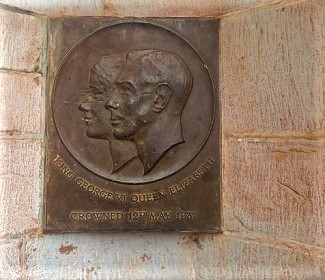
The King George VI Salute Stand : Monument built to mark coronation of Queen Elizabeth’s father
The story of the relationship between Ghana and the British cannot be told without the mention of the influence of the British colonial rulers in the Northern Region.
Around the 19th century, some British colonialists pitched camp in Tamale, capital of then Northern Ghana, ostensibly for slave trade and other forms of commerce.
Advertisement
Their presence was also to facilitate the extension of the British jurisdiction into northern Ghana.
Though the attention has always focused on the European trading fortresses dotted along the coastline of Ghana, there are a number of material remains and monuments in northern Ghana that shows the presence of the colonialists in the area.
Salute Stand
One of such monuments in Tamale is a Salute Stand of King George VI, father of the late Queen Elizabeth II.
The stand was built by the British colonialists who were based in the Northern Region to show respect and honour to King George VI when he was crowned the King of England on May 12,1937.

It was built on the same day he was coronated by those who were in the region and could not attend the ceremony to commemorate the day.
Structure
It is a small but relatively tall structure which was erected using concrete bricks with an opening. It also has the portraits of the parents of the late Queen Elizabeth II, King George VI and Queen Elizabeth on a metal-like plate with the inscription “King George VI and Queen Elizabeth crowned 12th May, 1937”, attached to the wall of the edifice.
The monument, which was named the King George VI Salute Stand, is located in a fenced space in the central business district of Tamale.
It is closer to the traffic lights on the main Tamale-Yendi road; adjacent the Regional Passport Office and opposite the Regional Library.
It was built in a garden where people went to relax back in the day.
Although it is sited in the heart of the metropolis, little is known about its existence.
In spite of the fascinating history behind the stand, the structure has been neglected and left at the mercy of the harsh weather conditions that are destroying the structure.
The site, which used to be a green garden, has now become bare but some residents still use the place for relaxation.
When the Daily Graphic visited the site last Wednesday morning, it observed that hawkers had invaded the area which used to be a restricted zone.
Unknown site
In an interview with the Daily Graphic, a local tourism enthusiast, Abdul Rauf Alhassan said though the monument was situated in an open place, most people did not know about its relevance.
He said it was a historic monument and when given the necessary attention, it could serve as a tourist attraction for both local and foreign visitors, especially the British.
He indicated that a lot of such historic sites could be found in the region but they had been neglected.
“During the Year of Return in 2019, a lot of the foreigners, including the British came to Ghana but only a handful visited the region, and this is because of the neglect of tourist sites and proper marketing of such like this one, by the authorities.
“It is time our authorities harnessed the full tourism potential of the region to attract more people to help generate more revenue for national development,” Mr Alhassan stated.
When contacted, the Northern Regional Manager of the Ghana Tourism Authority (GTA), Hakeem Ismael, said his outfit had taken note of the monument and that plans were far advanced to properly develop and market the site to attract tourists.
Undeveloped sites
The Northern Region has many monumental and tourist sites that have not been developed.
Notable among them is the German Cemetery in the Yendi Municipality, where some German colonial soldiers were killed and buried in a battle with the Dagbon people in 1896.
Writer's email: [email protected]



